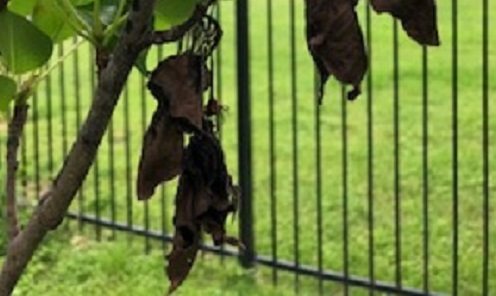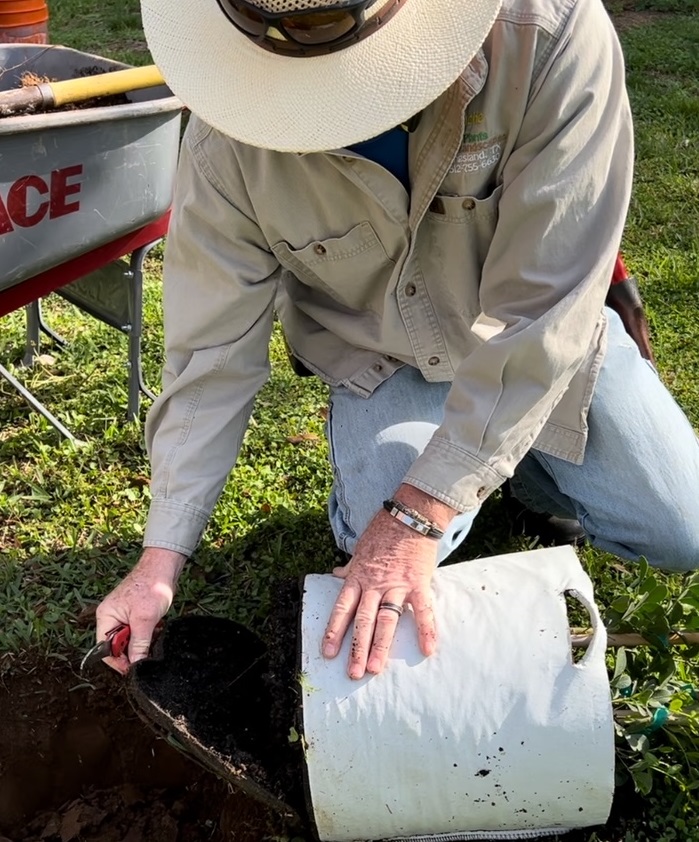For the third year in a row, Bradford Pears have been blooming during a rain event! Why does that matter, you ask? Because a very bad guy, a bacterium called Erwinia amylovora, or Fire Blight, enters the plant through the flower via splashing water.
The first symptom to appear, shortly after bloom, is a blossom blight. The flower will appear water-soaked, then turn black. The most obvious symptom of this disease is the shoot blight phase, in which the tip of the shoot turns brown or black and bend over like a “shepherd’s crook” or candy cane. Small droplets of sticky ooze may appear on the stems when the weather turns warm and humid. The infection will continue to spread down the shoot under favorable warm conditions, causing the tree to appear scorched by fire. The infection may spread through the current season’s growth to the older wood, causing dark sunken cankers to appear. Fruit may appear dark and shriveled if infected when young, and may exude droplets of sticky bacterial ooze.
Fire Blight bacteria overwinter in the bark at the edge of the cankers formed during the previous growing season. Once the weather becomes warm, the bacteria begin to ooze and are carried to the flowers by insects or rain. The shoots will begin to die back, and should be pruned to a point at least 6″ to 12” below infected tissue as soon as 1-2 weeks after petal fall. This will reduce inoculum which may infect the tree the following year. Any cankered limbs should be removed in the dormant season. Always disinfect pruning instruments with alcohol or a 10% bleach solution after each cut.
Shoot blight is common on young, succulent growth, so avoid excessive nitrogen fertilizers. Control insects with piercing and sucking mouthparts to avoid transmission of shoot blight infections.
Well-timed sprays to protect against infection may also be warranted. Agricultural streptomycin sprays may be timed just before or just after a rain and copper sulfate sprays may be used as well. However, there are certain conditions under which this is most effective, and consulting with your local AgriLife Extension Service would be advised. https://agrilifeextension.tamu.edu/library/landscaping/fire-blight-of-ornamental-pears/ Applications of these products to protect against new wounds following a hail storm may be beneficial, as well.
Bradford Pears are not the only trees which are susceptible to Fireblight. Other members of the Rose Family which can also get Fireblight are Pyracantha, Flowering Quince, Apples, Cotoneaster, and Raspberry.
Fire Blight can be a difficult disease to control. Good watering and fertilization practices, as well as attention to insect control will give your trees a fighting chance if they are infected with the Fire Blight bacterium.





Leave A Comment